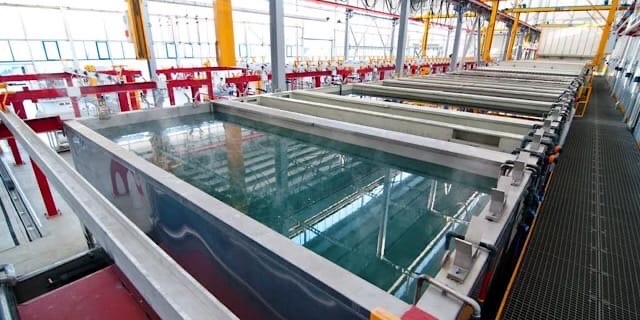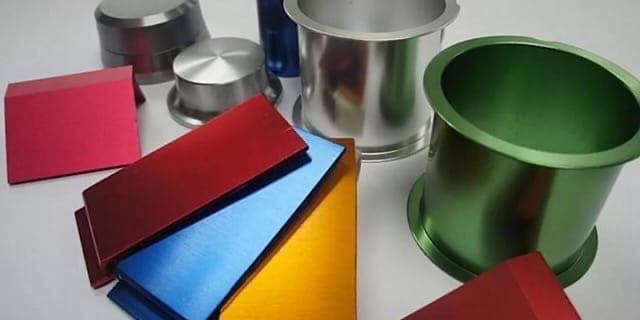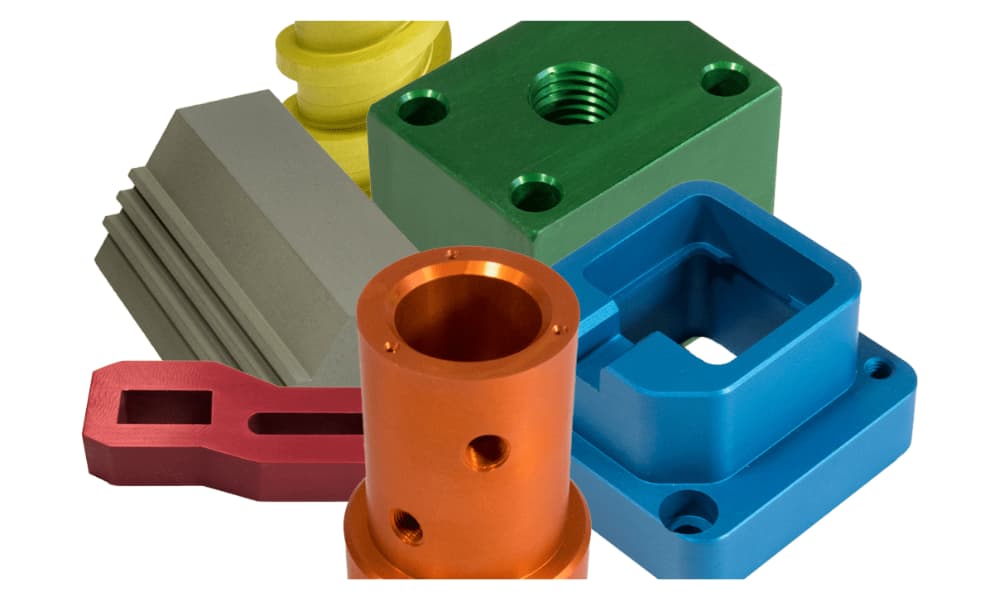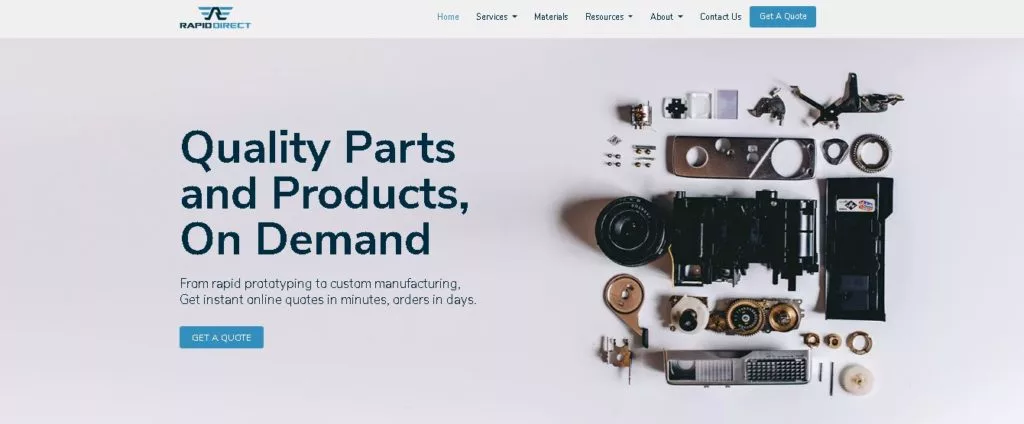During the manufacturing process, once a product is functionally complete, the next stage is surface finishing. Surface finishing is very important to ensure a durable and beautiful product. However, when dealing with aluminum products, a highly reputed method is anodizing. If you are someone into this method, you might want to know the cost to anodize aluminum products.
For people with knowledge of science, especially those who have touched chemistry, anodizing aluminum products should not be a strange term. However, if it is complex to you, this article was written to demystify the process. It will introduce the basics of anodization, factors that determine anodized aluminum price, and tips on how to go about the process. In short, by reading this article, you will have a run-through of the process. Are you ready to know a few things? Let’s get right on it!
Basic of Anodizing Process
Unless you have a chemistry background, you might find yourself wondering what anodizing aluminum is. In this section, we will discuss the basics of the process before introducing you to how much to anodize aluminum.
What is Aluminum Anodizing?

Aluminum anodizing is an electrochemical process that involves coating an aluminum surface with a wear-resistant oxide layer. On anodizing the aluminum parts, it becomes durable, corrosion-resistant, wear-resistant, and better in aesthetic terms. Anodizing aluminum parts is a different finishing technique. Unlike others, the addition of protective covers to the material is during the process.
Types of Anodizing Process
There are three types of processes in anodizing aluminum parts. Each one has a different degree of coating, and they depend on the electrodes, electrolytes, and electrical energy used.
Type 1
Type 1 anodizing of aluminum is also called the “light” type. The process involves putting the aluminum part in a tank containing chromic acid, with the aluminum part acting as the anode.
Current is made to pass through the chromic acid, and the positive aluminum particles leave the surface. The particles leaving the surface leave microscopic grooves, which, when oxidized, form the oxide layer. Type 1 anodized aluminum parts are more heat and corrosion-resistant when compared with unoxidized aluminum.
Type 2
Parts made using the Type 2 process are similar to Type 1’s. The only difference is in the acid used. Sulfuric acid replaces chromic acid, and due to its high potency, it results in a deeper groove and thicker oxide later. Type 2 aluminum parts have better paint retention because they are deep and easily filled.
Type 3
It involves the use of higher voltage and a strong acid (sulfuric acid). It is also known as hard anodizing and is ideal for making heavy wear parts.
Benefits of Anodizing Aluminum Parts

Among the many surface finishing techniques used on different products, especially aluminum products, Anodizing has better advantages. What then makes anodizing aluminum better than other techniques such as painting? Below are a few reasons why you should choose the technique.
Durability
Anodizing process leads to the formation of oxides of aluminum which is known for its hard property. The oxides are harder than the base metal, and on anodizing a part, we increase the surface area of its oxide layer. So, the surface of the part becomes much harder. With Type 3 anodizing, it can reach some metal cutting tool steels.
Resistance to Chemical Reactions
On coating, the aluminum surface becomes resistant to chemical reactions. This is because the coating stabilizes the surface leading to an unreactive property with chemicals. It does not matter whether it is at a high temperature, the oxide will still stay unreactive stand strong.
Paint Retention
Anodizing aluminum parts ensures that they do not peel off. This is because the pore retains the anodizing color. Therefore, normal mechanical actions such as peeling cannot lead to scratching off of color.
Eco-friendly
Anodization is an eco-friendly process because its by-products are non-toxic. This makes them stand out amidst other techniques used in the industry.
Adhesive Options
The anodized surface can contain adhesives such that the different aluminum parts which allow you to glue them together.
Aesthetics
Anodization is a good surface finishing technique for aluminum parts when thinking of aesthetics. It offers a beautiful and unique finish that complements wherever it is used.
Factors that Determine the Cost to Anodize Aluminum Parts

For the best surface finish for aluminum parts, many people prefer anodizing to painting. While choosing might be a simple decision, it depends on the cost to anodize the aluminum parts needed. Below is the factor that determines the cost of anodizing aluminum parts.
Coating Thickness
Coating thickness is how thick the oxide layer on the surface of the aluminum part is. It is a major factor that determines how much to anodize aluminum parts. If you want a basic thickness, it is the least expensive. Coating thickness’s effect on the cost to anodize aluminum parts is not like what many will expect. Most people expect that the thicker the thickness, the higher the anodizing cost. However, the thinner or the narrower the coating range, the more expensive it is. For example, +/- .001” is less expensive than +/- .0001”. This is because it is easier to control a thicker oxide layer than a thinner oxide layer. This level of control requires experience and professionalism, which is directly synonymous with a higher anodizing cost.
Types of Anodizing Process
Under the type of anodizing process for aluminum parts, we discussed the three types you might need for your surface finishes. Choosing any of the three types automatically plays an important role in how much does it cost to anodize aluminum parts.
Among the three types, the Type 1 anodizing process is the cheapest. This is because the materials used, such as chromic acid, are cheap, and there is lesser energy consumption. The ost to anodize aluminum parts via Type 3 process increases due to the use of costly materials. For example, sulfuric acid replaces chromic acid was substituted and higher energy consumption. Generally, the higher the type, the higher the cost of anodizing aluminum parts.
Dimension and Components of Anodized Aluminium
The chosen material dimension is a factor that plays a major role in the cost to anodize aluminum parts. The higher the dimension, the greater the surface area, and the higher the materials and facilities needed to make the process successful. Also, an increase in the number of components means an increase in labor and time. These two translate directly to anodized aluminum price.
Racking
Racking is a necessary process that allows you to carry the workload of the process from stage to stage. It is also important because it provides a secure electrical connection. There are many types of racking, e.g., weld, clamp, and bolt racking. The process is essential for quality, and it plays a huge role in anodizing cost. In situations where there is no specification on the method to use, manufacturers use a cost-effective method for the best yield while spending less. Racking also affects the number of parts hay you can process at one time which might drive the price up.
Extra Services
As a customer, if you require additional processes to make the process more efficient, you have to pay more. It is also the same when you are targeting the aesthetics of such products. Planning to plug or mask holes means additional service and additional price.
Want to get anodized aluminum parts at a great price? RapidDirect is for you.
Tips to Enhance Anodizing
Anodizing process might look a little complex. However, they are not. Below are some tips that can help you get the best out of the process.
Know Your Alloy
The chosen aluminum alloy must be the same as the one used with the incoming parts. This is important because different alloys require different surface finishing. Therefore, it is important to know your alloy.
Remove Oils and Fingerprints
Oils, debris, and fingerprints, when not removed, can lead to a problem with the finishing. Therefore, you should inspect the materials and remove oils, debris and fingerprints to increase success chances.
Stay Current in the field
While this might not help you with the process itself, staying current goes a long way in keeping abreast of the changes in the process used.
RapidDirect Anodizing Service

Anodizing aluminum parts is a simple process that you can do at home if you have the necessary apparatus such as a tank, chemicals, and stable electricity DC with high voltage. However, if you want the best, it is better to consider using an anodizing aluminum service. This is where we at RapidDirect come to play. We have the equipment and the experience to deliver at the highest possible level.
With us at RapidDirect, you can access the best anodizing aluminum services. This includes a short lead time and easy quotation. If you worry about how much does anodizing costs, we also operate at a low cost such that you don’t have to worry much about the anodizing cost. At RapidDirect, you have access to the very best. Therefore, when you think of smooth operation and high quality at a low price, think Rapid Direct.
Conclusion
Anodizing is an electrolytic process ideal for making the surface finishes of aluminum parts. It is ideal for the process, but like anything worth using, the price to pay is very important. In this article, you will learn about anodizing aluminum and how much does it cost to anodize aluminum parts.
FAQs
Yes, anodizing is an expensive process. However, the cost to anodize aluminum parts depends on some factors such as coating thickness, anodizing types, extra services, dimension/component of the aluminum materials. These factors were explained in the article.
Yes, you can anodize aluminum at home. So far, you have the necessary material such as tanks, chemicals, and stable electricity with high voltage. However, it is ideal to outsource services for the best in terms of quality and aesthetics


